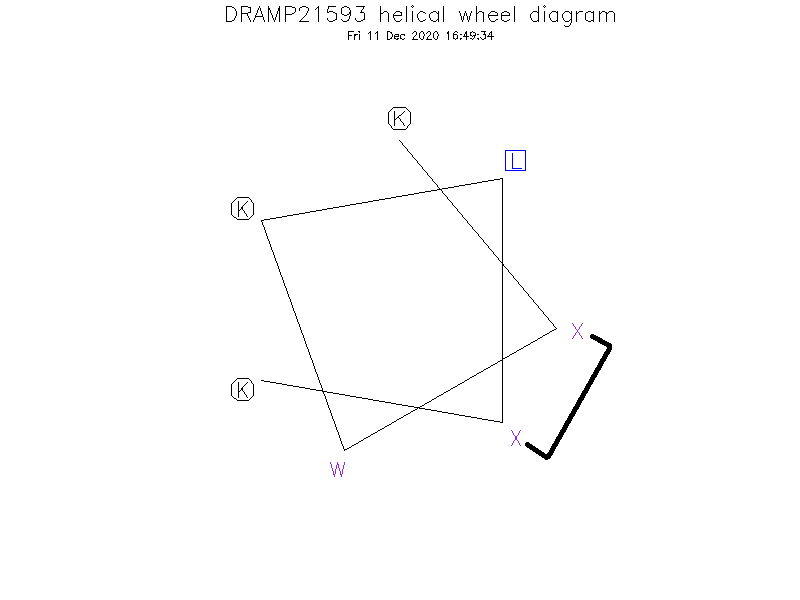-
-
-
-
-
-
Source
- Synthetic construct
-
-
Biological Activity
- Antimicrobial, Antibacterial, Anti-Gram+, Anti-Gram-
-
- Function: Antibacterial activity against Gram-positive and Gram-negative bacteria.
-
Target Organism
-
- Gram-positive bacteria: Bacillus subtilis ATCC 6633 (MIC = 12.5 μM), Staphylococcus aureus ATCC 6538p (MIC = 12.5 μM), Staphylcocccus epidermis ATCC 12228 (MIC = 25 μM);
- Gram-negative bacteria: Escherichia coli ATCC 25922 (MIC = 12.5 μM), Shigella dysentariae ATCC 9752 (MIC = 50 μM), Salmonella typhimurium ATCC 14028 (MIC = 50 μM), Klebsiella pneumonia ATCC 10031 (MIC = 25 μM), Pseudomonas aeruginose ATCC 27853 (MIC = 25 μM)
-
Hemolytic Activity
-
- It has <1.0%, <1.0%, <1.0%, <1.0%, <1.0%, <1.0%, <1.0% and 2.05% hemolysis against human red blood cells at 0.8,1.6, 3.1, 6.3, 12.5, 25.0, 50.0 and 100.0 μM.
-
Cytotoxicity
-
No cytotoxicity information found in the reference(s) presented
-
Linear/Cyclic
- Cyclic (Stapled)
-
N-terminal Modification
- Free
-
C-terminal Modification
- Amidation
-
Special Amino Acid and Stapling Position
- ①The Ⓧ (position: 2 and 6) in sequence indicates (S)-α-methyl, α-pententylglycine. ②Ⓧ (2) and Ⓧ (6) are cross-linked by hydrocarbon stapling through an oct-4-enyl hydrocarbon staple.
-
-
Secondary Structure
- α-helix in a 25 mM potassium phosphate buffer solution (pH 6.5)
-
Structure Description
- ①On the contraty, conformations of sequences S1 and S3 appear to be not greatly affected by the presence of the N-acetyl cap. ②It should be also noted that H-S3 displays a CD spectrum that is typically observed from α-helical peptides even without the N-acetyl cal.
-
-
There is no predicted structure for DRAMP21593.
- Literature 1
-
Title
- N-Capping Effects of Stapled Heptapeptides on Antimicrobial and Hemolytic Activities
-
-
Reference
- B KOREAN CHEM SOC. 2015 Oct;36(10)2511-2515. doi: 10.1002/bkcs.10483.
-
Author
- Thuy T.T. Dinh, Do-Hee Kim, Thang Q. Nguyen, Bong-Jin Lee, Young-Woo Kim

